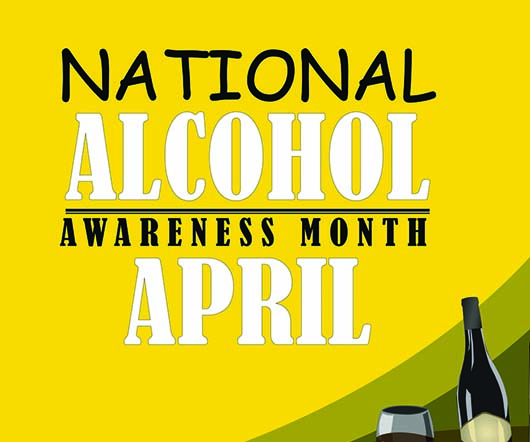By Mercy Care Plan/Mercy Maricopa Integrated Care staff Most everyone has heard about the opioid epidemic — and the many lives lost to these highly addictive painkillers. The Arizona Department...
By Mercy Care Plan/Mercy Maricopa Integrated Care staff
Most everyone has heard about the opioid epidemic — and the many lives lost to these highly addictive painkillers. The Arizona Department of Health Services released data on June 1, 2017 about opioid overdoses in the state. Those numbers showed that 790 Arizonans died from an opioid overdose; a 74 percent increase over the past four years. Statistics also show between June 15 and November 16, there were 564 suspected opioid-related deaths.
Easy access to opioids like Percocet, Vicodin, Morphine or Oxycodone contributes to this epidemic.
Think about a time you went to the doctor. Maybe you had a tooth pulled, twisted your ankle, hurt your back or had surgery. Were you prescribed a painkiller? You or someone in your family may have taken a prescription opioid without much thought as to what it was.
Did you know that prescription painkillers are cousins of heroin?
In fact, 80 percent of people who use heroin started with prescription pills. New information from the Centers for Disease Control and Prevention shows that it only takes four to five days to become hooked on pain medication.
Opioids act on the nervous system to relieve pain. And, treating pain with opioids is very common. So common that in 2013, there were enough opioid prescriptions written for every American adult to have their own bottle of pills . The highly addictive properties of opioids, coupled with physicians over prescribing their use, has led to an opioid epidemic. Across the U.S., more than 40 people die every day from overdoses involving prescription opioids.
But, an important question to ask is: Are opioids the best treatment for all pain?
“When we see a doctor for pain, we want relief. Does relief mean zero pain? No,” said Dr. Elisa Mashal, Medical Director for Mercy Care Plan and Mercy Maricopa Integrated Care. “Pain is our body’s way of telling us something is wrong. It’s important for your doctor to find out what the problem is and treat it so things don’t get worse. Not all pain is treated the same way. Just like you need different antibiotics for different kinds of infections, different medicines treat different kinds of pain.” It’s helpful to separate the myths from reality.
The myths vs the reality
- MYTH: All pain is the same. Pain is pain.
- REALITY: There are many different types of pain. Some of these are nerve pain, bone pain, muscle pain, pain after surgery, and pain after a dental procedure. Each type of pain is treated differently, and opioids are not proven to be the most effective treatment for any of them.
- MYTH: If my doctor prescribes it, it must be okay.
- REALITY: Treating pain with opioids is much more common in the U.S. than anywhere else. Doctors were encouraged in the mid-90s to be more aggressive about treating pain, so prescriptions increased, and they haven’t stopped. People were given the impression opioids are the best way to treat anything other than the most minor pain.
- The U.S. accounts for only 5 percent of the world’s population, yet we use 99 percent of the hydrocodone (Vicodin) and 81 percent of the oxycodone (Percocet). Remember, 4 out of 5 people who use heroin started with prescription opioids and 35 percent of people on opioids for chronic pain develop a substance abuse disorder.
- MYTH: If I have anything more than minor pain, I need an opioid.
- REALITY: There is little or no evidence to show that opioids are the best treatment for pain (even after surgery). In comparisons, non-opioids work better than opioids for pain, even after surgery, yet hospitals rarely offer the choice. In fact, for chronic non-cancer pain, opioids are only a little bit better for pain, function and disability than sugar pills!
- “A combination of Ibuprofen (Motrin, Advil) and acetaminophen (Tylenol) has actually been proven to work much better for pain that just recently started,” Dr. Mashal said. “These over‑the‑counter pain relievers also work better than narcotic pain medicine for pain after minor surgery and kidney stones. For pain that has been going on a long time (chronic), your doctor can prescribe other medicines or treatments that work much better than opioids and will not cause addiction.”
- When people use them after minor surgery, the risk of long-term opioid use goes up by 44 percent at one year after the surgery.
- MYTH: If I’m in the hospital, I don’t have a choice about what pain medicine I get. I shouldn’t ask questions because the doctor knows what treatment would be best for me.
- REALITY: It’s your body. Even in the hospital, ask your doctor about non-opioid options to treat your pain. Depending on the type of pain you’re having, you can ask for a non-narcotic anti-inflammatory medicine.
- MYTH: If I still have pain, it means my medicine isn’t working. I should feel zero pain.
- REALITY: When someone is under anesthesia, they’re experiencing 100 percent pain relief. Otherwise, we should remember, instead of trying to cover up the pain, we should try to find the cause. When you’re getting treatment for your pain, your goal should be 30 to 55 percent pain relief and improvement in your function and quality of life.
Debunking common misunderstandings is an important way to educate people about opioids. Understanding how they work is also important.
How opioids work
Opioids bind to the same brain systems as heroin and morphine. They attach to the central and peripheral nervous system. These are called mu, delta and kappa receptors. These are receptors in the brain, stomach, intestines, spinal cord and other organs.
They suppress, or lower, your brain’s ability to sense when you aren’t breathing enough. That leads to heart rhythm problems. It can cause your heart to stop.
Opioids can also suppress your body’s natural “feel good” hormones, called endorphins. With repeated opioid use, you start to depend on the drugs for those “feel good” feelings.
It might not make sense, but opioids can even make you more sensitive to pain after you’ve used them for a while. What they don’t do is increase your ability to function in your daily life. They don’t help heal the cause of the pain. What are some other things you can do to help relieve your pain?
Exercise/physical therapy
There is great research to show exercise does help. It helps with everything from reducing pain to working as a treatment for depression. Exercise is especially helpful for low back pain, osteoarthritis and fibromyalgia. There’s also formal physical therapy. You can also try: Yoga, Pilates, Brisk walking, Swimming/water aerobics and Cycling
Weight loss/healthy eating
When someone is carrying a lot of extra weight on their bodies, that weight puts pressure on your spine and joints. That’s why it’s important to make weight loss a goal. There are many great books on healthy eating. You can work with a nutritionist at your local hospital. You can also join a weight loss group online, or in person for extra support. Always talk to your doctor about the best nutrition or exercise plan for you.
Cognitive Behavioral Therapy (CBT)
This is a fancy way of saying “talk therapy.” CBT helps you to change negative thoughts and behaviors. This, in turn, changes your awareness of pain and your ability to cope with it. There’s a lot of research to show this is one of the most effective treatments for chronic pain. It helps because so many people who suffer from pain also suffer from other trauma, like post-traumatic stress disorder (PTSD). You can do this in person with a therapist or get services online by teletherapy. Learn more at www.thepainproject.com.
Alternative medicine
Chinese medicine (e.g., herbs, nutrition, and exercise, like tai chi), acupuncture or osteopathic manipulation.
Acupuncture has become more widely known as an accepted alternative treatment for pain. The treatment involves stimulating specific point on the body with needles. It may help ease types of pain that are often chronic, for instance low-back pain, neck pain and osteoarthritis/knee pain.
If you decide to visit an acupuncturist, check his or her credentials. In Arizona, a license is required to practice acupuncture. You can see a list of licensed acupuncturists here: https://acupunctureboard.az.gov/.
Neurofeedback/biofeedback
This involves learning to regulate specific areas of your brain by feedback from your brain waves. This is done by psychologists, family therapists and counselors.
If you think you’re dependent or addicted to opioids
Opioid dependence is when your body starts to rely on the drug to feel normal. If you stop taking the drug too quickly or reduce your dose, you may have withdrawal symptoms. These can include:
“The good news is there are many places to go for help,” Dr. Mashal said. “It’s important to talk with your clinical team or provider about this.”
If you’re a member of Mercy Care Plan or Mercy Maricopa, you will find providers on our websites: www.mercycareplan.com or www.mercymaricopa.org. Click the “Find a Provider/Pharmacy” banner on the top right-hand corner of either website. Call our Mercy Care Plan Member Services team from 7 a.m. to 6 p.m., Monday through Friday at 602-263-3000 or 1-800-624-3879 (TTY/TDD 711). Or, Mercy Maricopa Member Services team anytime, 24/7, at 602-586-1841 or 1-800-564-5465 (TTY/TDD 711). Check https://www.samhsa.gov/find-help and www.substanceabuse.az.gov/. If you think you may be dependent on opioids, talk to your doctor. Ask how to slowly reduce your dose safely to avoid withdrawal.
How you can help others
Dr. Mashal notes that it’s not uncommon for people to go through other people’s medicine cabinets looking for these types of medications.
“What if you do get opioids and have leftover medicine after your pain goes away? Do you have teenagers in the house? Someone who comes to do home repairs?” she said. “It’s extremely important to dispose of any leftovers immediately.”
Visit www.acpa.net/arizona_drug_disposal_locations.aspx for a map of disposal sites all across Arizona. This will help ensure others won’t use your medications.



























